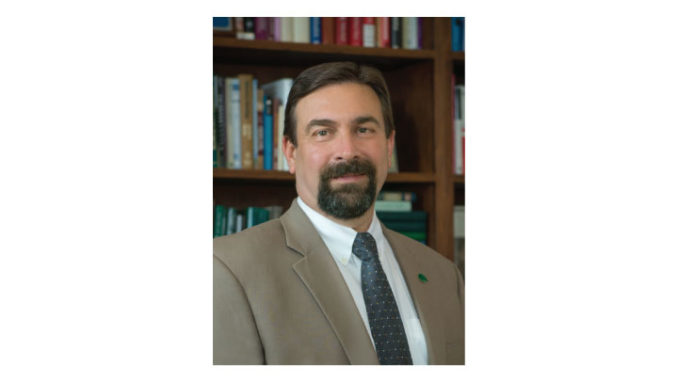
By Dr. Tony Frank
Chancellor, Colorado State University System
Over the course of this past summer, I hit the road with my colleague Kathay Rennels and traveled around the state. This is a trip we try to make every year when there isn’t a pandemic – this summer included stops in Greeley, Yuma, Fort Morgan, Steamboat Springs, Craig, Gunnison, Grand Junction, Center, Alamosa, Lamar, Rocky Ford, Castle Rock, and Durango.
It’s part of my role heading up the university system that delivers Extension, agriculture, and rural initiatives to Colorado – and Kathay’s role as interim vice president of Engagement and Extension at CSU and one of the state’s must trusted champions of rural Colorado. These trips are a time for us to listen, not talk, so we can get a clear picture of how we’re doing in delivering on this core part of our mission.
For as long as I’ve been making these summer road trips, water has been a big topic of nearly every conversation. It’s not a surprise: The history of the modern American West largely revolves around water or the lack of it.
In fact, many of the great leaders in Colorado water history were connected to Colorado State University, among them Ralph Parshall, who came to the Fort Collins campus in 1899 as a student and became an international leader in civil engineering and hydrology. (He developed the Parshall Flume in the college’s hydrology lab in 1921.) Parshall grew up on a family farm 16 miles west of Golden and recalled “dry-farming” acres of potatoes, oats, turnips, and wheat in the 1890s.
Just over a half-century later, he noted how changes in the climate and precipitation levels had made those lush acres of crops on his family’s land a thing of the past. In 1956, he gave a talk to the Fort Collins Rotary Club, where he said: “About the state, the water situation is becoming acute. Stream flow practically everywhere is extremely low. … Our population is growing at a steady pace which means more dependable water supplies are needed to meet our needs. Examining the water problem we find the curve representing the population is rising and the curve showing the water supply is gradually dropping. As the years move on, these two curves get further apart, which indicates the serious situation we are approaching. People are on the move to live in Colorado, farmers are to be
supplied with water, industry is expanding to use more water, and we are going downhill on water supply. What are we going to do about this problem?”
It’s a question we keep asking, 23 years into a drought in the Colorado River Basin. And it’s one of the reasons that our third building to open at the CSU Spur campus in Denver will be the Hydro building – a place focused on research, science, and learning around all things connected to water. Hydro, which will also house Denver Water’s new water-quality laboratory and the
Salazar Center for North American Conservation, will open in January in conjunction with the National Western Stock Show. It’s also why now-Secretary of Agriculture Tom Vilsack worked with us to establish an annual symposium run out of Spur that brings together diverse stakeholders to share multi-sector, non-partisan solutions to the complex and perplexing challenges of Western water.
This is clearly a high-stakes issue for Colorado agriculture and communities around the state. And it’s tempting to view the challenges facing our Western states as distinct – but in reality, communities and populations around the world are grappling with the same issues. For that reason, this year’s Water in the West Symposium is looking globally at ways that cities, countries, Tribes, and agricultural producers have pursued solutions and innovations that
transcend boundaries and provide a useful roadmap for others.
I’m going to offer a shameless plug here and encourage any of you with an interest in water and its impact on Colorado and the West to sign up and join us Nov. 2 and 3. This symposium is designed not just for policymakers, producers, and conservationists but for all of us who understand the importance of a safe and reliable water supply to the health, vibrancy, and even survival of our communities.
And if you’re interested in learning more about the water situation in Colorado, look for the next issue of our STATE Magazine, which will come out early next year in conjunction with Hydro’s grand opening. This is a conversation CSU will continue to engage – whether over coffee with farmers on the Eastern Plains or in our campus and Spur laboratories and meeting rooms – because answering Ralph Parshall’s question (“What are we going to do about it?”) demands our best science, collaboration, and thinking.
The Colorado State University System includes Colorado State University in Fort Collins, Colorado State University Pueblo, Colorado State University Global, and the public Spur campus in Denver.
Support Northern Colorado Journalism
Show your support for North Forty News by helping us produce more content. It's a kind and simple gesture that will help us continue to bring more content to you.
BONUS - Donors get a link in their receipt to sign up for our once-per-week instant text messaging alert. Get your e-copy of North Forty News the moment it is released!
Click to Donate
